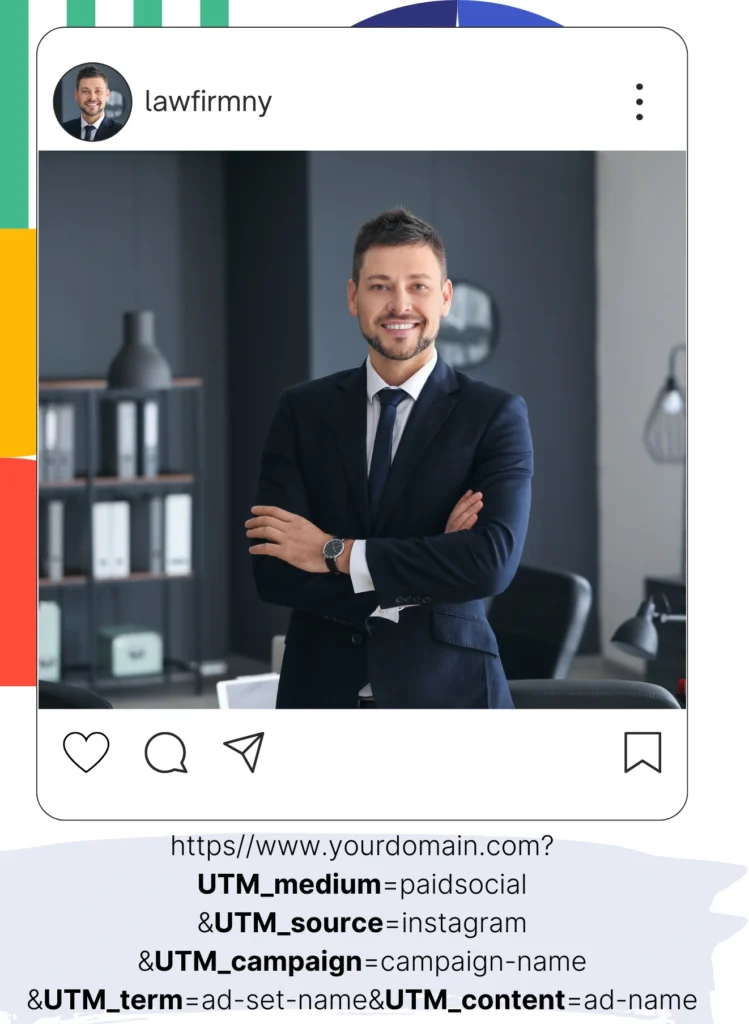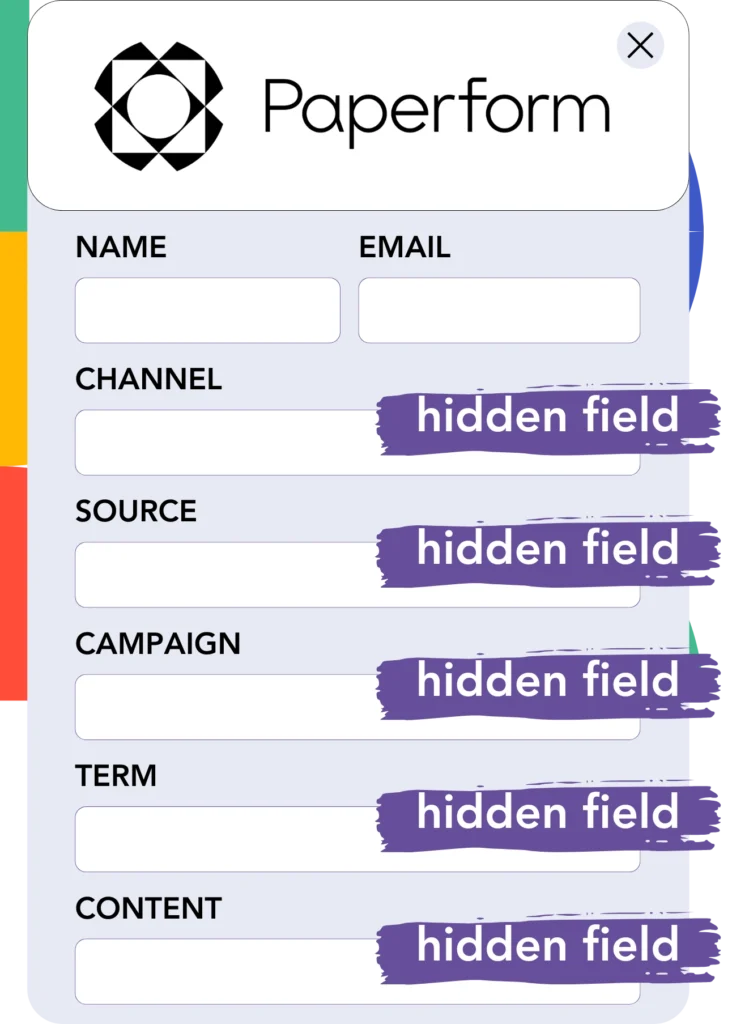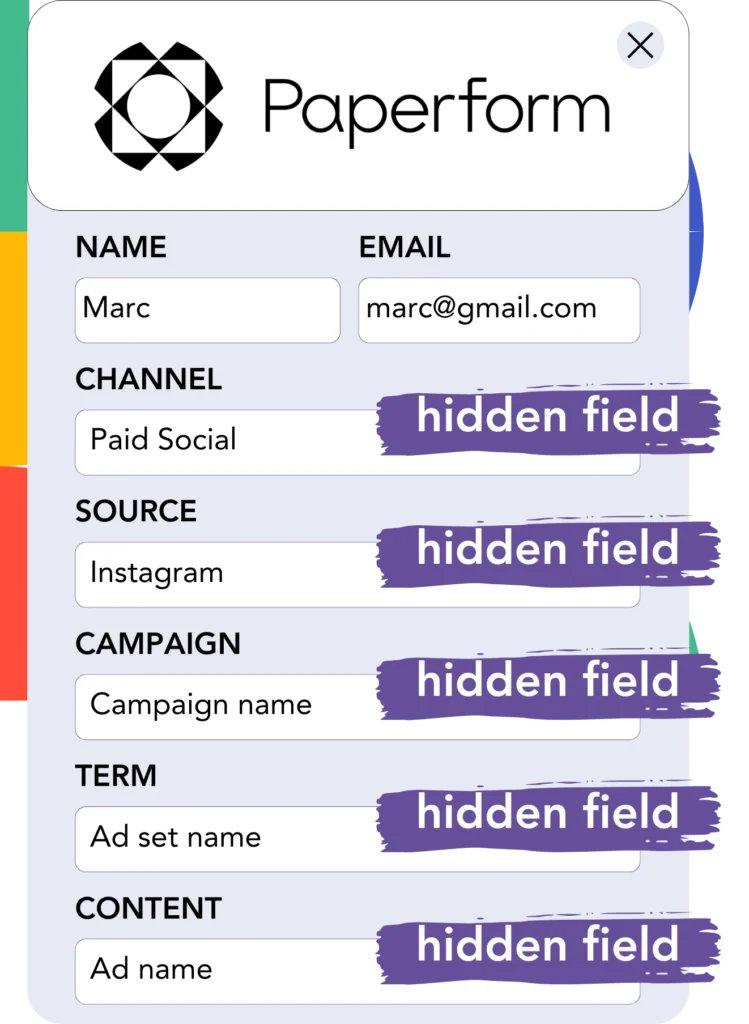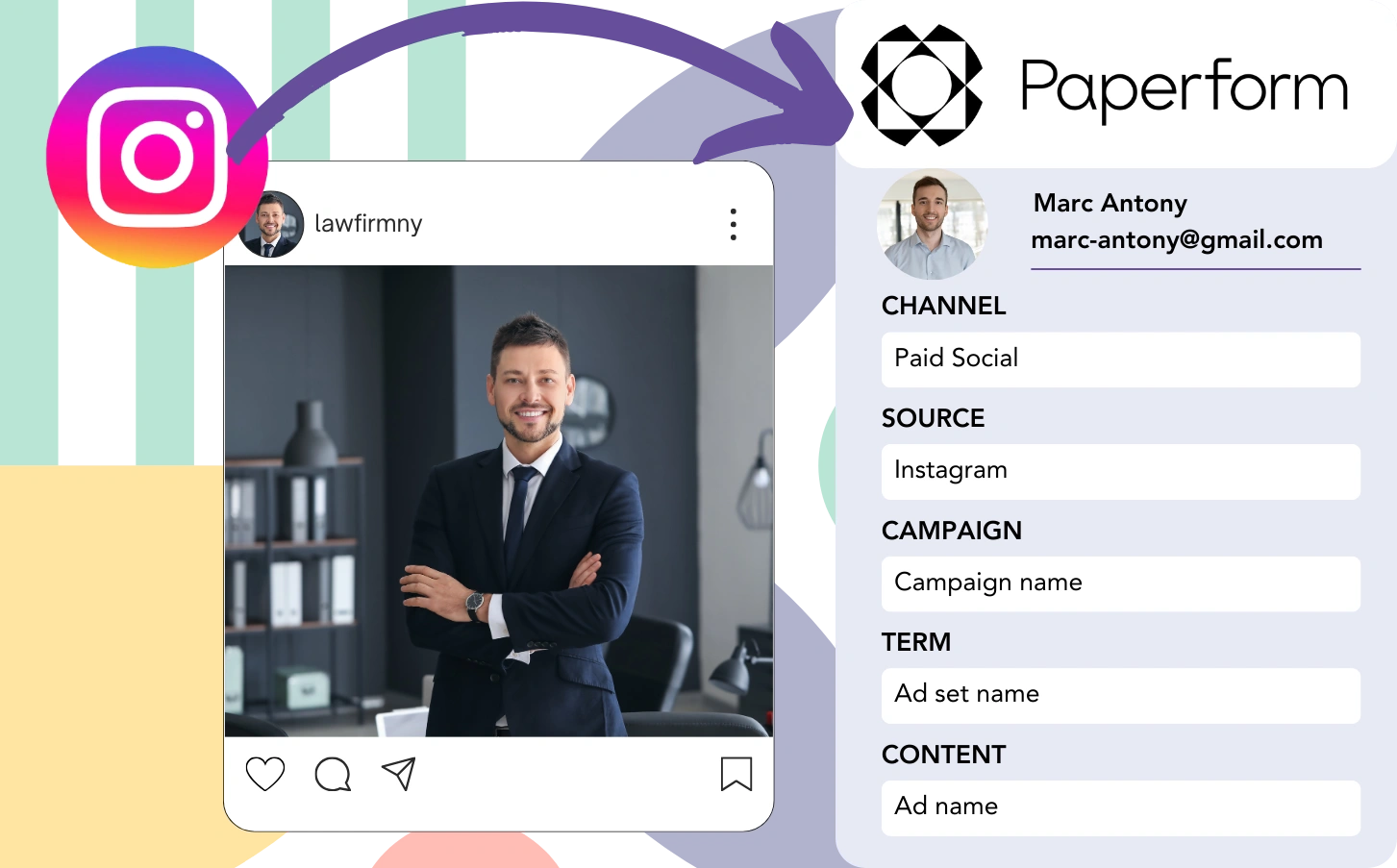Using Paperform, you gather Instagram leads but cannot assign each to a particular Instagram ad. Likewise, when the lead transitions into a customer, there is no way to link it back to the exact ad.
Without this tracking, you lack visibility into the effectiveness of your Instagram ads, making it unclear which ads are driving leads and customers. As a result, money is spent on various ads without knowing their conversion potential.
A simple solution allows you to track each lead to the Instagram campaign, ad set, and exact ad that brought it in.
Let’s work it through in stages!
How to track Instagram ads in Paperform
Step 1: Add Leadsources in the head tag of your website

Leadsources is a simple tracking system for lead origins. Once added to your site, it gathers up to 7 pieces of source information for each lead.
➡️ Sign up to Leadsources.io for free
➡️ Add the Leadsources tracking code to your site
Step 2: Add the UTM parameters to your Instagram ads

Add UTM parameters in your ad URL to follow Instagram campaign, ad set, and ad data. Here’s a sample format:
UTM_medium=paidsocialUTM_source=instagramUTM_campaign=campaign-nameUTM_term=ad-set-nameUTM_content=ad-name
In its final state, the URL should resemble this:
https://www.yourdomain.com?UTM_medium=paidsocial&UTM_source=instagram&UTM_campaign=campaign-name&UTM_term=ad-set-name&UTM_content=ad-nameImportant: Leadsources gathers source data for every lead, without UTM parameters, to ensure thorough tracking.
Step 3: Add the hidden fields in Paperform

Hidden fields are form fields not visible to users, created to store information that submits with the form.
When a Paperform submission occurs, Leadsources automatically fills hidden fields with Instagram ad information. Leadsources subsequently saves this data within your Paperform.
Step 4: Capture the Instagram ads data in Paperform

When users engage with your advertisements and come to your site, Leadsources fetches the Instagram campaign, ad set, ad details, and more.
Leadsources collects and populates the Instagram ads data into Paperform’s hidden fields.
Consequently, after submitting the form, you can access the Instagram ad data along with the lead details in Paperform.
How does Leadsources work?
Each time a visitor engages with your site, Leadsources fetches Instagram ad data and populates it in the hidden fields of your form. When the form is submitted, this data, including lead details like name and email, is forwarded to Paperform.
Leadsources analyzes all of this source data for each lead:
| Lead source data | Fetched automatically |
| Channel | ✅ |
| Source | ✅ |
| Campaign | ✅ OR use UTM_campaign |
| Content | UTM_content parameter is required |
| Term | UTM_term parameter is required |
| Landing page | ✅ |
| Landing page subfolder | ✅ |
As noted in the table above, even when UTM parameters are not viable—like with organic sources such as Google search or referrals—Leadsources still gathers some lead source data:
- Channel
- Source
- Campaign
- Landing page
- Landing page subfolder
Unlike other tools, Leadsources assesses lead sources across all marketing channels, including organic and paid strategies.
Performance reports: Lead, sales, and revenue by source
By inputting Instagram ad data in Paperform, you can generate performance reports that showcase:
- Leads, sales, and revenue by channel
- Leads, sales, and revenue by source
- Leads, sales, and revenue by campaign (aka. Instagram campaign)
- Leads, sales, and revenue by term (aka. Instagram ad set)
- Leads, sales, and revenue by content (aka. Instagram ad)
This facilitates the adjustment of your Instagram budget to reflect the campaigns, ad sets, and ads that generate the most leads, sales, and revenue.
Let’s go over some of the reports that you can put together:
1. Lead source reports
Formulate performance reports that track the number of leads received from:
- Channel
- Source
- Campaign (aka. Instagram campaign)
- Term (aka. Instagram ad set)
- Content (aka. Instagram ad)
- Landing page
- Landing page subfolder
Example #1: Leads by channel
This report highlights the channel that delivers the greatest volume of leads.

Example #2: Leads by Instagram campaign
You can now focus on a specific lead source (e.g., Instagram) and observe the number of leads resulting from each Instagram campaign.

Example #3: Leads by Instagram ad
After establishing the Instagram campaign that produces the most leads, you can explore which ad set or individual ad is accountable for generating them.

2. Sales and revenue source reports
Now that we’ve established which Instagram campaign, ad set, and ad are responsible for our leads, we should determine if these leads are converting into sales and revenue.
To accomplish this task, connect your leads to a CRM such as GoHighLevel. This enables tracking of sales and revenue from various channels, sources, Instagram campaigns, ad sets, ads, landing pages, and landing page subfolders.
With this data, you can reshape your Instagram ad strategy to emphasize the channels, sources, campaigns, ad sets, and ads that maximize sales and revenue.
You can create numerous sales and revenue reports, such as:
- Sales and revenue by channel
- Sales and revenue by source
- Sales and revenue by campaign
- Sales and revenue by term (e.g., Instagram ad set)
- Sales and revenue by content (e.g., Instagram ad)
- Sales and revenue by landing page
- Sales and revenue by landing page subfolder
Example Scenario:
| Channel | Search Paid | Social Paid |
|---|---|---|
| Leads | 50 | 75 |
| Sales | 5 | 6 |
| Average Order Value | $150 | $100 |
| Revenue | $750 | $600 |
After ads went live on Google and Instagram, the initial “Leads by Channel” report revealed that Social Paid ads (Instagram) outperformed Search Paid ads in lead generation.
However, when looking at the sales and revenue information in your CRM, you found that the Search Paid channel produced more revenue while bringing in fewer leads compared to the Social Paid channel. This discovery encouraged you to adjust your budget and invest more in the Search Paid channel.
LeadSources tracks the source of each lead on Paperform, whether they come from ads, organic search, social, email, etc. and syncs that data with each submission. See the full breakdown on the lead source in Paperform page.

